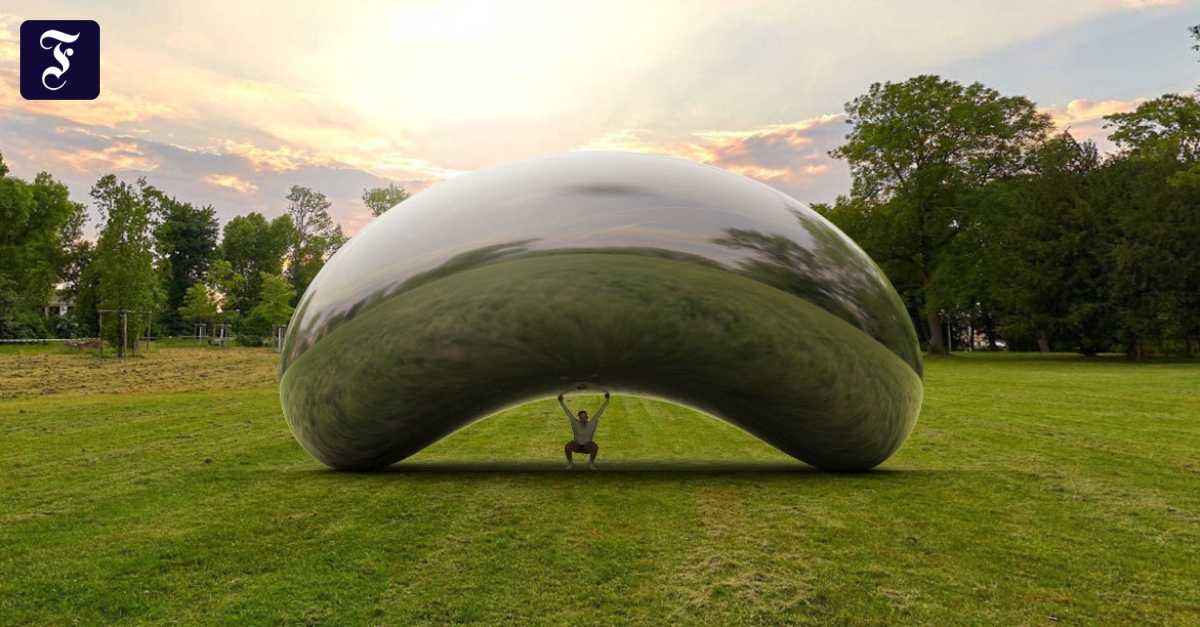WWhen a giant worm-like creature grows out of the ground next to you on a picnic in the park, ballerinas dance in the bushes and the question “Is this real?” Above the peaks, as if written in the sky with helium balloons, you are not on the verge of a nervous crisis – but in the Düsseldorf Hofgarten. There are metallic figures floating there, an avatar extending his arms for meters or artificial flowers sprouting beside the pigeons that click without a doubt. None of the interventions in nature are real in terms of being physically present. They are virtual artworks of public spaces, examples of augmented reality (AR), in which the environment is expanded to include objects from a computer – as viewed through a smartphone or tablet.
What was so much fun a few years ago in the digital scavenger hunt game “Pokémon Go” has now gained a foothold as a design principle in the art. The NRW-Forum Düsseldorf presents the latest styles in what the house is proclaiming – the world’s first AR Biennale. The works of nineteen artists and groups can be seen. Arranged in the part of the park connecting the NRW Forum with the Kunstpalast from the courtyard, the parade also symbolizes the growth of the institutions united at the beginning of 2020, preceded by creaking in beams. Before the digitally oriented NRW-Forum moved under the roof of the Kunstpalast, its director, Alain Bieber, who complained of a lack of political support, was on the verge of being ousted. A relaunch including a “nice” exhibition and an epidemic later seemed to have reached the ideal: at the opening of the Biennale, Bieber, now artistic director of the NRW Forum under General Manager of Kunstpalast President Felix Kramer, hailed the fruitful collaboration.
Easily controlled anyway: Jeremy Bailey’s work, as shown in the app on the smartphone.
:
Photo: dpa
Interaction is also part of the exhibition programme, some of which are also in Essen and Cologne. The music plays when a black cube is opened, when the screen is tapped, so that the cube is closed again instantly by the hand of God intervening vertically. “Algorithm in der Höhle” is the name of the work of Damjanski, who presents himself on his homepage as “a browser-based artist,” but actually lives in New York. In the minds of the beholder, it is clear that he wants to link connections with Plato’s ideals about the possibilities of human knowledge with the mystery of digital black boxes. But his work can also be consumed as an entertaining game: click, close.
Someone is dancing: a ballerina from Ballett am Rhein in augmented reality.
:
Photo: dpa
If you want to see something unifying in business selection, this is exactly the conceptual arc. With fun at eye level, the AR Biennale also attracts those for whom climbing to venerable temples for inspiration might seem too steep. These can be digital natives as well as seniors. Anyone with a smartphone, statistics from last year apply to 86 percent of all Germans, has a ticket to the Biennale — provided you’re there. With the corresponding application, QR codes can then be scanned from panels set up along the tracks. Then the cell phone camera no longer recorded an empty meadow, but a crouched image bearing a monstrous bean-shaped sculpture. This is what Jeremy Bailey’s augmented reality tribute to the stainless steel ‘Cloud Gate’ memorial designed by Anish Kapoor looks like. As an internet meme, it will work instantly. In the context of the museum, it raises questions: Is digital art as opposed to physical art as Pippi Longstocking as opposed to Little Uncle? Does AR make U into E? Do you move the weights?

“Certified gamer. Problem solver. Internet enthusiast. Twitter scholar. Infuriatingly humble alcohol geek. Tv guru.”






